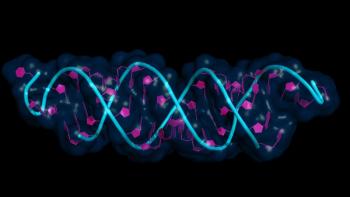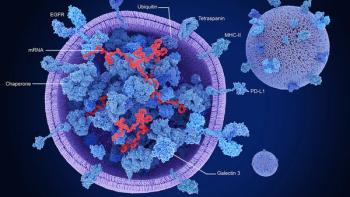
Purification through Membrane Chromatography for Advanced Therapies
Key Takeaways
- Membrane chromatography offers faster processing and higher throughput for large biomolecules, addressing limitations of resin-based methods.
- It is particularly beneficial for advanced therapies, enabling efficient purification of large molecules like plasmids and viral vectors.
Performance advantages are driving adoption of membrane chromatography for advanced therapy purification.
Resin-based chromatography has been used for purification of drug substances for many decades. This approach has been demonstrated to be robust and safe for pharmaceutical manufacturing, but because of the need for the resin beads to be tightly packed, it has inherent processing speed limitations due to slow diffusion and molecule size constraints. The rapid growth in development of antibodies, gene therapies, and other biologics has necessitated more efficient, scalable, and flexible purification methods. Membrane chromatography effectively addresses these challenges. By functioning via convective flow, membranes enable faster processing times and higher throughput, even for larger molecules such as plasmids, messenger RNA, and viral vectors.
What are the advantageous features of membrane chromatography?
In addition to higher flow rates and throughput, membrane chromatography also supports reduced pressure drops and mass transfer resistance, carries lower operational costs, and facilitates realization of enhanced product quality, according to Bin Guo, manager of advanced R&D (membrane development lead) with Purilogics.
The convection-dominated transport mechanism by which membrane chromatography operates allows for higher flow rates and reduced residence times compared to the diffusion-dominated resin processes, Guo says. Simultaneously, the relatively large pore sizes of membrane structures minimize pressure drops and mass transfer resistance, enabling the efficient purification of large biomolecules such as plasmid DNA and self-amplifying RNA, which may be difficult to purify using traditional resin-based technology, she notes.
Decreased operating costs are made possible due to the shorter processing times and reduced need for column packaging and validation procedures. Guo adds that this benefit is realized to the greatest extent during large-scale manufacturing and when addressing troubleshooting needs. Finally, she observes that the rapid processing capability helps maintain the biological activity of less stable biomolecules by reducing exposure time to undesirable chemical conditions, thereby preserving product quality.
Attractive for advanced therapy purification
The ability to efficiently purify large molecules makes membrane chromatography ideally suited for downstream processing of advanced therapies, but, emphasizes Clement Bassens, general manager of fiber chromatography at Cytiva, it is highly flexible and can accommodate all biologics, including more conventional recombinant proteins and antibodies. “They do shine, however, for large molecules, particularly advanced therapies; the large pore sizes allow for flow rates not possible using resins,” he states. He adds that the fast cycling time of membrane chromatography devices allows them to be fully amortized within a single batch, which is of special note for clinical applications where resins are typically only partially used.
With respect to downstream applications, membrane chromatography has been most widely used in flow-through polishing steps, especially anion exchange (AEX) for removing host cell proteins, DNA, and endotoxins, according to Bassens. Advances have expanded its use into affinity capture with an initial focus on protein A, he says.
The specific application is determined by the surface chemistry of the membranes and the specific process requirements, Guo adds. Purilogics, for instance, has developed an efficient and effective membrane chromatography strategy for the capture and polishing steps of supercoiled plasmid purification (1).
What are some of the options for membrane chromatography?
For membrane chromatography to be used in bioprocessing, scalability and robustness are essential. As membranes need to be housed in a device, devices must be designed such that they provide similar performance across all scales, according to Bassens. Solutions are already available in the market showing scalability for both polishing and capture applications, including
Mustang (Cytiva) (2), Purexa (Purilogics) (1), Sartobind (Sartorius) (3), and Natrix (MilliporeSigm) (4), membranes, among others.
Several different membrane chemistries and device formats have been introduced for biopharmaceutical chromatography applications. “The specific choice of surface chemistry and device format is dictated by several factors, including the physicochemical attributes of the drug substance to be purified, including size, charge, etc., the types and concentrations of impurities present, the process scale, and the throughput needs,” Bassens comments.
Devices can be flat sheets, stacked discs, hollow fibers, spiral wound modules, and radial flow cartridges, in addition to others. Membranes, meanwhile, can be generated through electrospinning or conventional techniques. An important area of development, according to Bassens, is multilayered membranes. “Technologies for generation of these advanced chromatography membranes are attracting significant attention, as they can incorporate diffusive elements to overcome the limitations associated with separation by convection, leading to increased capacities while maintaining high flow rates,” he explains.
Additive manufacturing (e.g., 3D printing) is also allowing the more efficient design and production of membrane chromatography devices that exhibit low hold-up volumes, according to Bassens.
What are some concerns with adoption of membrane chromatography?
Despite the obvious advantages provided by membrane chromatography, particularly for advanced therapies, widespread adoption will require addressing a few concerns within the biopharmaceutical industry.
Perhaps the biggest challenge is the need to overcome resistance to change due to the conservative nature of the sector. Resin chromatography is the traditional approach, and it can be difficult to convince manufacturers to switch to a newer technology, according to Guo. “If a manufacturer is satisfied with its current approved process, there is generally less interest in exploring new technologies that will mean undergoing the regulatory approval process for changes unless absolutely necessary,” she observes.
Guo also notes that adopting new technology is easier during early development stages. However, the readiness of a technology to support production at a sufficiently large scale to meet target commercial volumes is a critical factor in technology evaluation. “It is therefore essential that membrane chromatography suppliers offer comprehensive product portfolios that support their customers’ development needs from lab scale to full production scale,” she contends
Focusing on customer needs paramount
Indeed, key to the development of membrane chromatography solutions for downstream processing applications, according to Bassens, is understanding the potential range of customer processes and their varying needs. “The process parameters will establish the imperatives in terms of pressure, capacity, and productivity that will define the type of membrane and device,” he states. “Product development then involves a combination of product optimization, application development, and a good understanding of market opportunities,” Guo adds.
For capture applications, Bassens notes that the choice of ligand will be the starting point, followed by the most appropriate membrane chemistry needed to reach target capacities. Generally, devices with low hold-up volumes are preferred to ensure efficient separation. For polishing applications, the type of ligand will depend on the customer problem (AEX, cation exchange, mixed-mode), and the device format, according to Bassens, will need to allow for the right flow speed. “Having a varied toolbox of ligands, membranes, and devices is essential to meeting the diversity of application requirements,” he concludes.
Anticipating strong demand
Growing use of membrane chromatography for downstream purification of biopharmaceuticals is anticipated over the coming years. “In the near term, membrane chromatography is expected to see steady growth in the market due to its outstanding performance and shorter processing times. Long term, we are likely to see greater product diversity, with membranes designed to handle increasingly complex biologics, such as large or emerging biomolecules, for which traditional resin technologies are generally ineffective,” says Guo.
With the promise of addressing clinical costs and enabling advance therapies purification, Bassens agrees that demand for membrane-based solutions will outpace that for resin and other technologies, resulting in broad adoption in advanced therapies and personal medicine.
Advances in membrane chromatography technology are also anticipated. “Continued improvements in process development, user-friendly formats that simplify scaling from lab to production, and cost efficiency will help drive broader adoption of membrane chromatography in biologics manufacturing,” Guo observes. Material innovation will, says Bassens, enhance binding capacities and reduce costs, and hybrid workflows combining membranes and resins will become standard. Cytiva also expects sustainability and the push by regulators towards recycling to be big drivers for adoption of membrane chromatography going forward.
References
- Donaldson. Purilogics Debuts Manufacturing Grade Purexa Membrane Chromatography Technology to Support Customers’ GMP Processes.Press Release, July 30, 2025.
https://ir.donaldson.com/news/news-details/2025/Purilogics-Debuts-Manufacturing-Grade-Purexa-Membrane-Chromatography-Technology-to-Support-Customers-GMP-Processes/ - Cytiva. Chromatography Membranes. Cytivialifesciences.com (accessed Nov. 10, 2025). https://www.cytivalifesciences.com/en/us/shop/chromatography/membranes
- Sartorius. Sartobind Membrane Chromatography. Sartoriustr.com (accessed Nov. 10, 2025).
https://www.sartoriustr.com/Upload/Dosyalar/resim-pdf/sartobind-membrane-chromatogra-070b6d6c-6771-4a5f-93ad-042c089ad0e9.pdf - Millipore Sigma. Membrane Chromatography. Sigmaaldrich.com (accessed Nov. 10, 2025).
https://www.sigmaaldrich.com/US/en/products/pharma-and-biopharma-manufacturing/chromatography-bioprocessing/membrane-chromatography?srsltid=AfmBOorI9UUg0RH-RwYyF_45o5XvweLCLZZZETGktEcyE9ljMvzJ0emx
About the author
Cynthia A. Challener, PhD, is a contributing editor to BioPharm International®.
Newsletter
Stay at the forefront of biopharmaceutical innovation—subscribe to BioPharm International for expert insights on drug development, manufacturing, compliance, and more.





